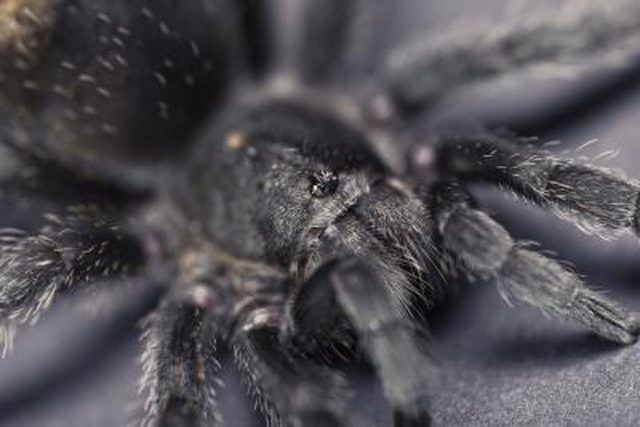Bulbs
Flower Basics
Flower Beds & Specialty Gardens
Flower Garden
Garden Furniture
Garden Gnomes
Garden Seeds
Garden Sheds
Garden Statues
Garden Tools & Supplies
Gardening Basics
Green & Organic
Groundcovers & Vines
Growing Annuals
Growing Basil
Growing Beans
Growing Berries
Growing Blueberries
Growing Cactus
Growing Corn
Growing Cotton
Growing Edibles
Growing Flowers
Growing Garlic
Growing Grapes
Growing Grass
Growing Herbs
Growing Jasmine
Growing Mint
Growing Mushrooms
Orchids
Growing Peanuts
Growing Perennials
Growing Plants
Growing Rosemary
Growing Roses
Growing Strawberries
Growing Sunflowers
Growing Thyme
Growing Tomatoes
Growing Tulips
Growing Vegetables
Herb Basics
Herb Garden
Indoor Growing
Landscaping Basics
Landscaping Patios
Landscaping Plants
Landscaping Shrubs
Landscaping Trees
Landscaping Walks & Pathways
Lawn Basics
Lawn Maintenance
Lawn Mowers
Lawn Ornaments
Lawn Planting
Lawn Tools
Outdoor Growing
Overall Landscape Planning
Pests, Weeds & Problems
Plant Basics
Rock Garden
Rose Garden
Shrubs
Soil
Specialty Gardens
Trees
Vegetable Garden
Yard Maintenance
Common Black Spiders
Common Black Spiders. Many animals and insects adopt colors that enable them to thrive where their counterparts fail. Spiders are no exception. Black spiders are found all over the world, in and around the places where people live. Their dark color allows them to hide in corners and crevices, where they can hunt and live undetected.
Many animals and insects adopt colors that enable them to thrive where their counterparts fail. Spiders are no exception. Black spiders are found all over the world, in and around the places where people live. Their dark color allows them to hide in corners and crevices, where they can hunt and live undetected.
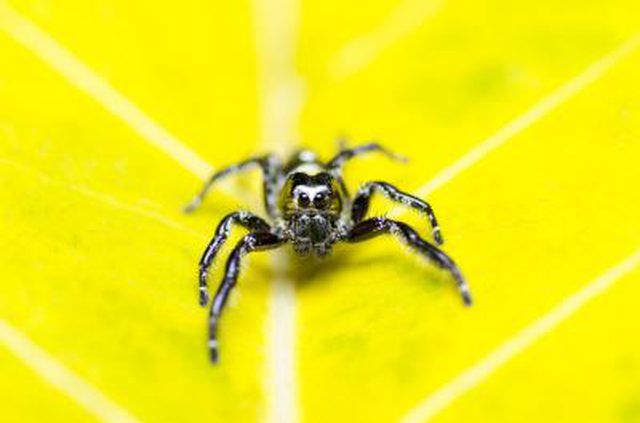
Spiders appear in many different shapes, sizes, and colors, mostly depending on the environments in which they live. Some spiders exhibit bright colors to ward off predators or to camouflage themselves within their habitats. These spiders normally are not the ones that people need to worry about. A few of the more dangerous spiders are very dark in color. These spiders include the North American Black Widow Spider; two Australian species, the Redback Spider and the Mouse Spider; and the many types of tarantulas that are dark-colored. Other common black spiders are the Black House Spider, that inhabits residential areas in Australia; and various types of Jumping Spiders, which are found all over the world.
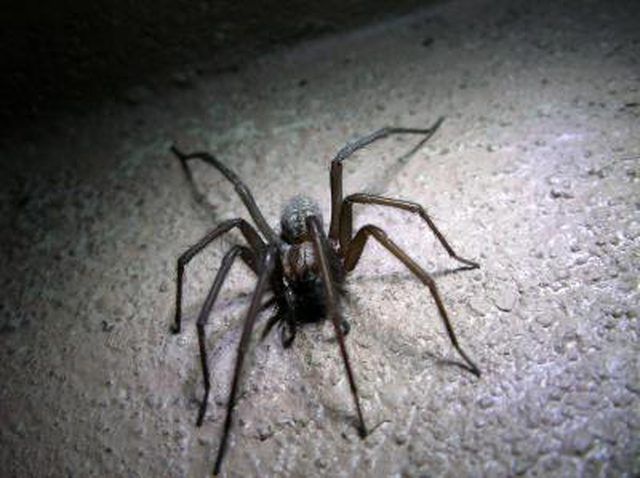
The Black Widow Spider is one of the most dangerous and most notorious of all the American spiders, though different types of Black Widows are found throughout the world. The female of the species is known for its glossy black exoskeleton, which has a red hourglass-shaped mark on the underside of the abdomen and will feed on the smaller male during mating. The Black Widow is widespread across the southern portion of the United States and in tropical regions worldwide, and is commonly found in dark places in and around homes. Most build their webs in the corners of garages and sheds and sometimes colonies of them are found under manhole covers. The spider inflicts a painful bite that can cause a variety of symptoms, including vomiting, sweating, fever, and chills; however, the bite is seldom fatal to humans who have a strong immune system and receive immediate care.
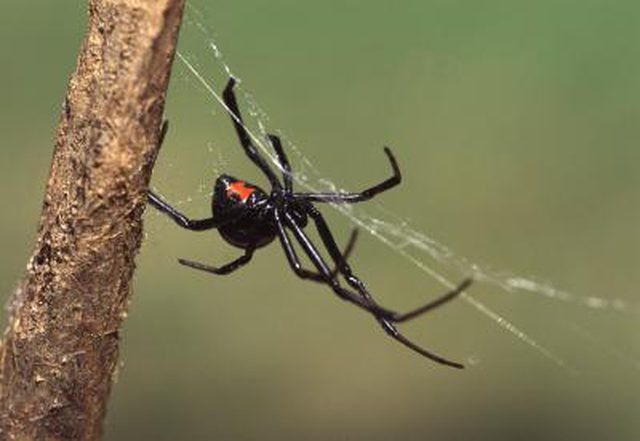
The Redback Spider is the Black Widow's Australian counterpart. The Redback looks strikingly similar to the Black Widow, with the black exoskeleton and the large abdomen, but the red pattern on the abdomen isn't hourglass-shaped. The Redback's and Black Widow's webs are alike in the pattern in which they're constructed and, like the Black Widow, the Redback is also found in dark places near houses. However, the Redback's bite is usually more dangerous than the Black Widow's, and is commonly known for causing sweating at the site of the bite. The Redback can cause symptoms including vomiting fits, convulsions, and paralysis, and the bite can be lethal to a human if anti-venom medication is not administered.
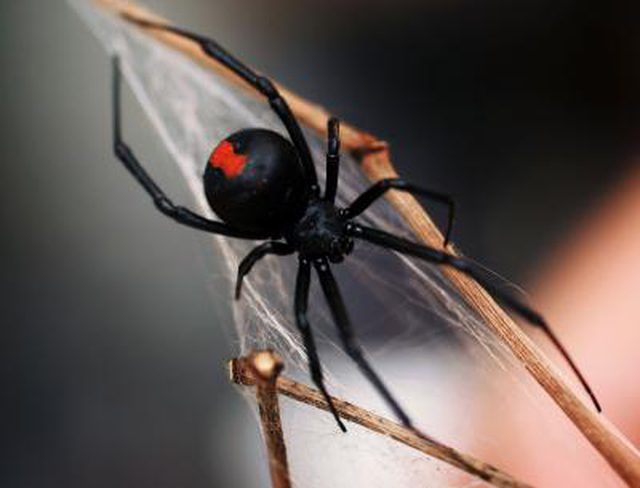
The Black House Spider is another common Australian spider whose entire body is black, and which makes its nest in places around houses, most notably in the corners of window and door frames. The spider is small in size, with the female growing up to 17 millimeters and the male reaching 8 millimeters. This spider is not dangerous to humans. The Black House Spider is the natural prey of another Australian species, the White-tail Spider.
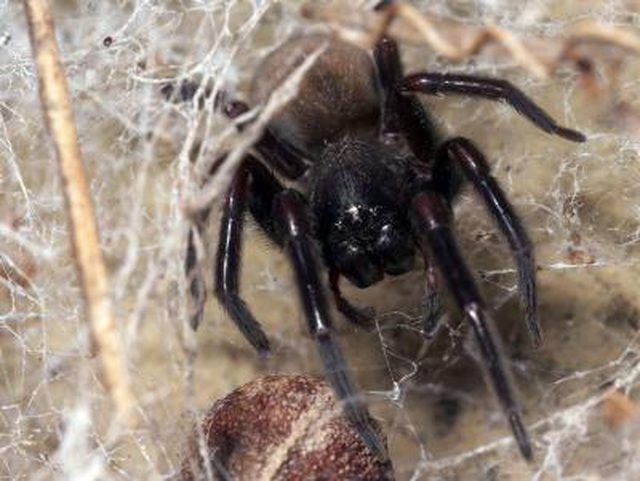
The Mouse Spider is an Australian spider belonging to the Trap-Door family, a type of spider that digs a hole underground and creates a lid at the top of the den to allow them to catch prey. The Mouse Spider can grow to one to three centimeters in diameter; like other species, female Mouse Spiders typically are larger than males. The male Mouse Spider can be identified by its large red fangs–which give it an intimidating appearance–but the female inflicts a more serious bite to humans. These spiders make their burrows in dry areas and also can be found in rain forests or living in trees.
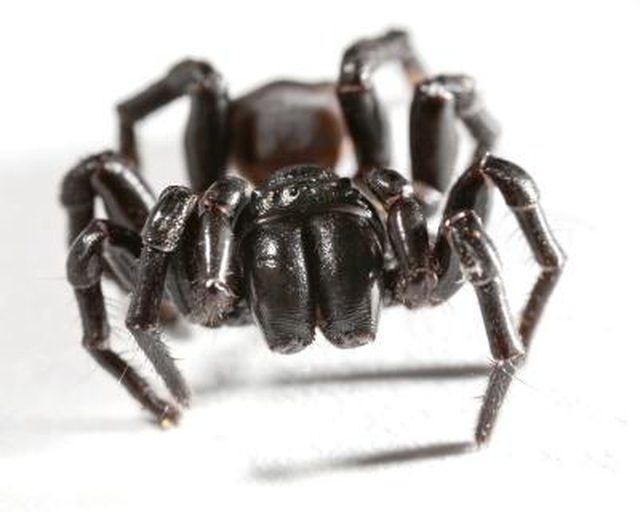
Jumping Spiders are found all over the world and appear in many colors, but many times, the ones that stand out are the larger black ones. Sometimes black Jumping Spiders have colored patterns–spots or stripes of various colors. Jumping Spiders have two large eyes that greatly enhance their long-range vision and they can leap many times their body length. When Jumping Spiders hunt, they will move within striking distance and pounce on their prey, using their strong legs to subdue the prey so that the venom can be injected. While the Jumping Spider's bite isn't poisonous to humans, the bite can be irritable to the skin, especially if the victim is allergic to spider bites.
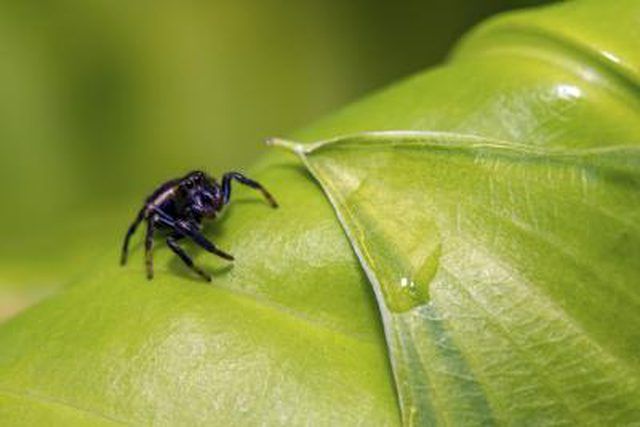
Tarantulas are the largest of all spiders and occur worldwide. They appear in a variety of colors, most notably black, brown, or various hues of red or orange. In the United States, male tarantulas are most commonly seen, especially during mating season when they migrate to search for females. Male tarantulas are often black or dark brown. Rather than using a web to catch prey, tarantulas will move about to seek insects, small mammals, birds, and reptiles, and they can go for weeks without eating. When frightened, the tarantula may stand on its hind legs and expose its large fangs, or it will turn and flick urticating hairs from its abdomen, which irritate skin and eyes as well as the throat and nasal passages if swallowed or inhaled.
